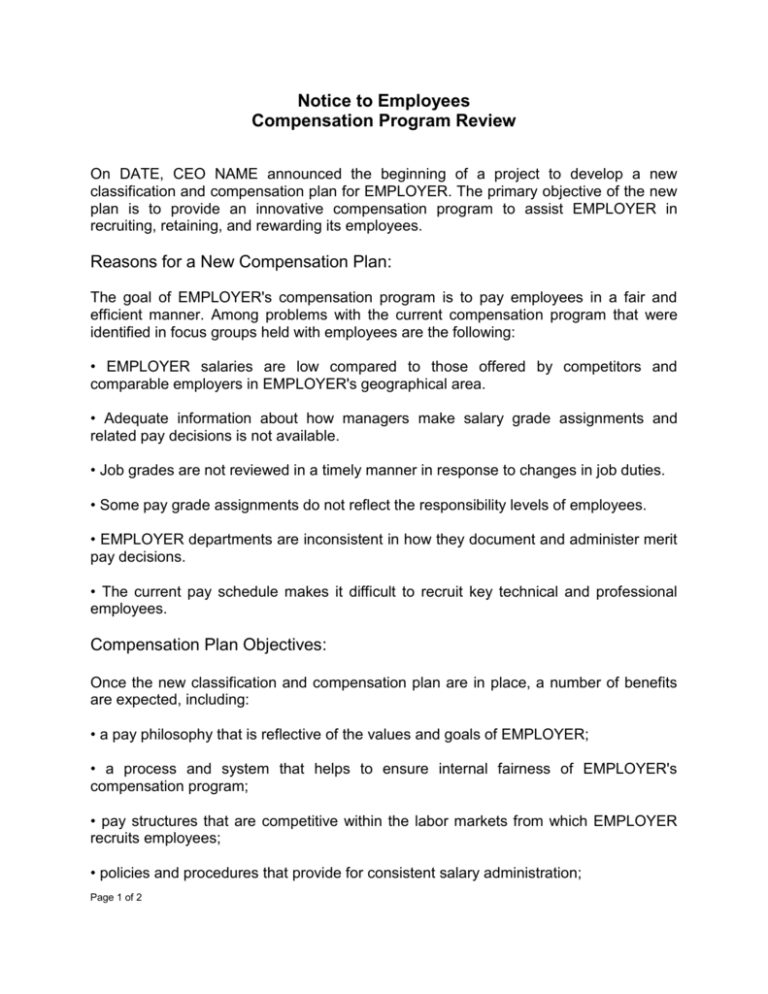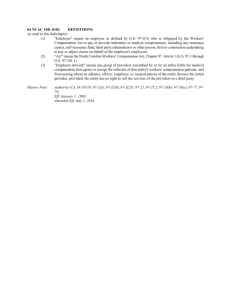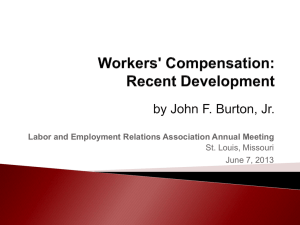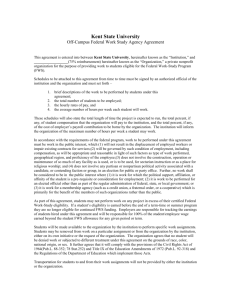Compensation Notice to Employees
advertisement

Notice to Employees Compensation Program Review On DATE, CEO NAME announced the beginning of a project to develop a new classification and compensation plan for EMPLOYER. The primary objective of the new plan is to provide an innovative compensation program to assist EMPLOYER in recruiting, retaining, and rewarding its employees. Reasons for a New Compensation Plan: The goal of EMPLOYER's compensation program is to pay employees in a fair and efficient manner. Among problems with the current compensation program that were identified in focus groups held with employees are the following: • EMPLOYER salaries are low compared to those offered by competitors and comparable employers in EMPLOYER's geographical area. • Adequate information about how managers make salary grade assignments and related pay decisions is not available. • Job grades are not reviewed in a timely manner in response to changes in job duties. • Some pay grade assignments do not reflect the responsibility levels of employees. • EMPLOYER departments are inconsistent in how they document and administer merit pay decisions. • The current pay schedule makes it difficult to recruit key technical and professional employees. Compensation Plan Objectives: Once the new classification and compensation plan are in place, a number of benefits are expected, including: • a pay philosophy that is reflective of the values and goals of EMPLOYER; • a process and system that helps to ensure internal fairness of EMPLOYER's compensation program; • pay structures that are competitive within the labor markets from which EMPLOYER recruits employees; • policies and procedures that provide for consistent salary administration; Page 1 of 2 • a streamlined process for job documentation and pay decisions that avoids unnecessary delays and administrative complexity; and • an improved performance management program that provides employees with more information for improving job performance and for making career growth decisions. Project Steps And Schedule: Step One—Planning And Initial Analysis: Project consultants will receive comments from managers and employees to determine institutional needs and goals. Step Two—Compensation Policy Development: Based on input from managers and employees, EMPLOYER's Compensation Committee will draft compensation policies relating to initial pay, pay adjustments, promotions, reassignments, and other actions affecting pay. Step Three—Job Documentation: Human Resource Department representatives and consultants will work with managers and employees to complete job analysis questionnaires and to develop job descriptions for benchmark jobs. Step Four—Job Evaluation: All benchmark jobs will be analyzed to determine where each position fits within an internal job hierarchy. Step Five—Development Of Salary Structure: The job evaluation data will be linked with appropriate market salary data to construct EMPLOYER's new salary structure. Step Six—Finalize, Elements Of New Plan: Draft compensation policies and the new pay structure will be finalized by a specially appointed executive committee. Step Seven—Communicate With Employees: Each employee will receive details regarding the new plan and how they might be affected. Step Eight—Plan Implementation: Changes to title and job descriptions will be made. Salaries will be adjusted in accordance with the new plan guidelines and available resources Consulting Assistance: To ensure that the new compensation program is progressive and includes ideas that have proven successful, EMPLOYER has asked the NAME OF FIRM for assistance in developing the new plan. NAME OF FIRM is a reputable and experienced firm specializing in the area of human resource, compensation, and benefits management. Page 2 of 2




